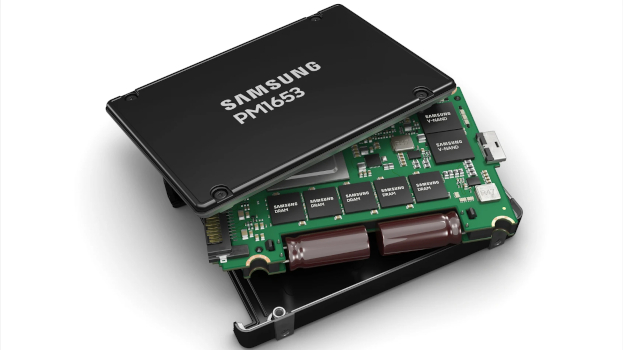
What is Flash storage?
Flash storage, once considered an expensive alternative to traditional storage solutions like HDDs, has taken centre stage in recent years as lowered prices have made it more accessible.
Flash storage is, simply put, a data storage technology found in computers, smartphones, tablets, cameras, and all-flash arrays that uses flash memory.
With microsecond latency and the ability to keep data without a power source, Flash storage is fast and reliable. It’s also versatile, with solutions that can work for both average consumers and enterprises.
How does flash memory work?
Flash memory is made from solid state chips. They have transistors connected to each other so they function like a NAND logic gate. Flash memory is non-volatile; this means it can preserve data even with the power off. Data is stored using a charge much like a capacitor representing a bit. These are inside surface-mounted chips connected to a printed circuit board.
When Flash memory is erased, it’s done so in entire blocks rather than individual bits. The drawback of this is that it’s slower than RAM and will also wear out faster than it. But flash memory now lasts longer thanks to software techniques such as wear levelling (this arranges data across these blocks so that erasing and rewriting doesn’t wear out a single block prematurely).
What are the benefits of flash storage?
Flash memory, unlike traditional hard drives, doesn’t have any moving parts. This makes it more durable and ideal for use in more rugged or easily dropped devices, like a mobile phone. Since a high capacity of storage can be packed in smaller units, flash memory can be stored in compact, lightweight forms like USB drives and camera memory cards.
Flash is also faster than a normal hard drive, with high transferring speeds and the ability to boot up an operating system far more quickly.
What are the disadvantages of flash storage?
Despite these benefits, there are still several drawbacks to this storage system you’ll need to consider when weighing your options.
Flash has a limited number of rewrite-erase cycles before individual blocks can no longer be used. The cells will wear out after 10,000-1 million erasings. Reading disturbs nearby cells and hence it can not read the same cell too many times, and in some cases you may need a special version of a programme to protect the drive from wearing out prematurely.
Why is Flash storage more expensive? Will it get cheaper?
Flash storage is more expensive than a normal hard drive because it’s still a relatively new technology. The spinning platters of metal the make up a traditional hard drive, on the other hand, have been around for decades, allowing the technology to mature and become cheaper as manufacturing processes are finessed.
To get around transistors wearing out in Flash memory, more transistors are used to compensate for defective ones, pushing up the cost. Also, the assembly process of a solid-state disk is a much more complex matter. The firmware and controller must reside in a small space and then be tested for hours to check compatibility and stability with the systems they are connected to; this adds to the cost.
But Flash memory is being used more and more in all types of computing devices, so we are witnessing a decrease in the cost per gigabyte of the medium as this gives manufacturers the incentive to make technology cheaper.
© Dennis Publishing
Professional Development for IT professionals
The mission of the Irish Computer Society is to advance, promote and represent the interests of ICT professionals in Ireland. Membership of the ICS typically reduces courses by 20%. Find out more








Subscribers 0
Fans 0
Followers 0
Followers